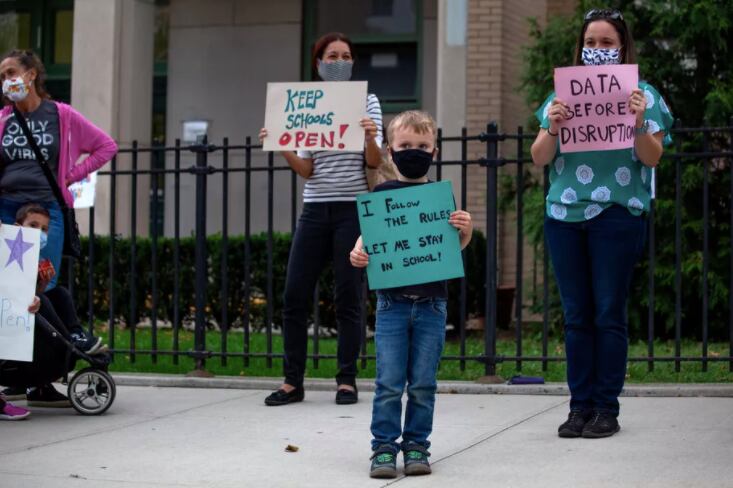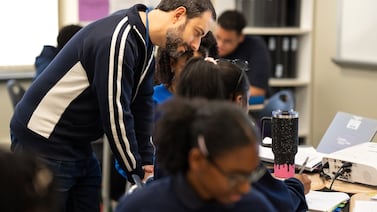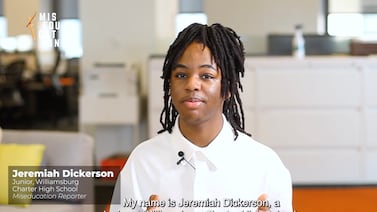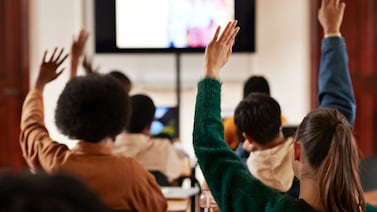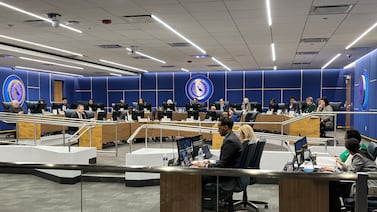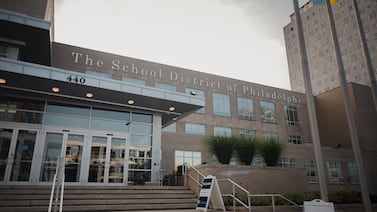This story was originally published on Oct. 7, 2020 by THE CITY.
Anabel Espinal, of Far Rockaway, was stunned Wednesday when the childcare program she uses turned away her two youngest children — all because of their ZIP code.
City health officials advised the early education program to bar children who live in the 11691 ZIP code from attending the center, located in another part of the Rockaways.
“It was really upsetting,” the 33-year-old mother of three said. “They told me I wasn’t allowed to bring the kids to school, that I had to quarantine.”
Espinal’s experience embodied what many described as lack of clear communication to residents, schools and businesses in zones newly targeted by city and state restrictions in Queens COVID-19 hot spots.
The fast-moving changes are upending work and learning — sparking fury and frustration from Far Rockaway to Forest Hills.
Mayor Bill de Blasio on Monday labeled 11691 a COVID hot spot where schools would close and high-risk activities would be limited. The CDI Head Start program Espinal uses is in the 11693 zip code — outside any areas of concern identified by the city or state.
Espinal, who works in human resources at a supermarket chain in Far Rockaway, was late for work and had to scramble to get her mother to care for 3-year-old Matias and 2-year-old Sebastian.
Her 6-year-old son Matthew was admitted to his private school around the corner from the preschool without issue.
Emails obtained by THE CITY show that a staffer in the city Health Department’s Bureau of Child Care told the Head Start program’s leaders shortly after noon on Tuesday that “children and staff coming from the affected area (11691) should be excluded from the program, as a precautionary measure, until further guidance is provided.”
The city Department of Health and Mental Hygiene and Department of Education did not immediately respond to questions about the guidance — which also prompted program officials to tell 10 staff members who live in the 11691 zip code not to report to the school, the emails show.
Dueling Geographies
Further confusing the schools picture are conflicting city and state maps of where buildings must close.
Gov. Andrew Cuomo approved de Blasio’s proposed shutdowns of all public and private schools in designated ZIP codes, accelerating the buildings’ closings to Tuesday. The shutdowns are to last at least two weeks.
On Tuesday afternoon, the governor announced a superseding set of zone boundaries determining where schools, non-essential businesses and gatherings must either shut down or restrict activities to help curb the spread of COVID.
The state drew those color-coded red, orange and yellow zones, Cuomo said, not based on ZIP codes but on where officials had identified clusters of residents testing positive recently for the coronavirus.
Those state boundaries — delineated on hard-to-interpret maps shared on social media by the governor’s office — overlap with 11691 and other ZIP codes in Queens and Brooklyn targeted by de Blasio’s announced restrictions, but differ substantially.
Compounding bewilderment, higher-resolution maps issued by the state Wednesday tweak the lines Cuomo promoted Tuesday.
On Wednesday night, the city put out an online map, searchable by address, and released a definitive list of public school buildings earmarked for closure.
In all, the city shut down 108 public school sites on Tuesday, including single schools spread across multiple buildings, and added 61 public school sites for closure Thursday based on the governor’s map.
“It’s hard for the people that do this work every day to put this together and to figure out exactly what’s happening — I can’t imagine everyday New Yorkers figuring this out,” said City Council Member Antonio Reynoso (D-Brooklyn), whose office Espinal called about the snafu. “Both de Blasio and Cuomo need to figure out a way to communicate this in a way that people can understand, because lives are literally at risk.”
School Snatched Away
Uncertainty left some educators and parents in the second Queens shutdown zone, encompassing parts of Forest Hills, Rego Park and Kew Gardens, confounded about whether certain schools would be open or closed come Thursday.
Parents told THE CITY they had yet to be contacted by their children’s schools as of Wednesday afternoon.
Ifat Golan, a Forest Hills parent of a sixth-grader at Stephen Halsey JHS 157 — in one of Cuomo’s red zones — told THE CITY that she received an email from the school warning parents of a possible closure.
Parents waited hours for answers. Around 8:30 p.m., they were notified by administrators about Thursday’s closure. Parents at P.S.139 in Forest Hills were told, via email, that classes would be conducted remotely for the “an initial two-week period.”
Golan was among a group of parents who held a news conference Wednesday afternoon to advocate to keep school buildings open for in-person, part-time learning for students whose families choose it.
“Our children need to be at school,” said Golan. “We are talking about their mental health as well.”
She described herself as “ecstatic” when her daughter started going to her new middle school in September, albeit part-time.
“The difference is tremendous, it’s huge,” Golan said.
Parents in the Dark
Parents at the “Kids Belong in Class” event, held in front of shuttered PS 196 on 113th Street in Forest Hills, expressed frustration at skimpy information amid sudden new mandates from the city and state.
“The goal posts are moving constantly,” said co-organizer Corey Kanterman, father of a third grader who attends the school, which is in a red zone.
“First, our ZIP code is one where it’s okay, but there’s a slight uptick that needs to be watched,” he added. “And then hours later, it’s a cluster and that’s the new metric, and it’s an area labelled orange or red, and schools and pretty much everything else is being shut down.”
Rocky Bonanno, whose son is in fourth grade at PS 196, was at least satisfied to have gotten a timely notification about the school’s shutdown, even as he urged the reopening of the building.
“If the entire DOE was run by the people in this school, I would have no problem with the entire system,” he said.
A citywide list of shuttered schools DOE released Wednesday night showed 11 out of the district’s 40 schools will be closed.
With no definitive list of schools to be closed until late Wednesday night, parents had been turning to a map the governor posted on Twitter to determine whether or not their children’s schools are within red or orange zones.
Micah Morrison, a member of the District 28 Community Education Council, predicted that this round of school closures wouldn’t be the last.
“That’s the way the year is going to be,” Morrison said. “These things are going to happen all over New York.”
‘Now It’s Scary Again’
Alexa Weitzman, chair of Queens’ Community Board 6, which covers Forest Hills and Rego Park, said that the flurry of conflicting announcements “creates a real whiplash.”
“When numbers do start to rise, our families need a clear understanding of the data and the guidance and when there is no consensus on who and what they should be following and listening to, it creates mass confusion within our communities,” she added.
Community Board 6 posted an open letter on Tuesday stating it is not equipped with adequate information from the city to “work swiftly to contain the spread.”
Confusion abounded for Forest Hills businesses, where even inside the red zone on Wednesday afternoon some appeared oblivious to the coming shutdowns, which will limit restaurants there to take-out and delivery, and close other non-essential businesses entirely.
One boundary line in the neighborhood runs down Queens Boulevard, with tougher, red-zone restrictions on the northern side of the strip.
Sushi Koi, on the red-zone side of the boulevard, was still operating indoor dining as of Wednesday.
Roberto Lamorte, 42, owns Tuscan Hills, an Italian restaurant on the orange side of the boulevard. There, outdoor dining may continue for parties of four or fewer, but indoor dining is banned.
He’s grown resigned to the roller coaster of shifting mandates.
“For us, business was good because of delivery, thank God!,” Lamote said. “Thanks to delivery we survived, but now it’s scary again because it’s happening again.”
And now?
“We wait,” he said. “That’s what we’ve been doing for the last four months. Every day we have to see what they say and then do it. It’s definitely scary and confusing because every day we don’t know what’s going to happen.”
Lamorte voiced a wish for more consistent communication from the state about new twists and turns.
“When Cuomo was on TV every day, it was much better,” he said. “Now, we just wait until we hear.”

